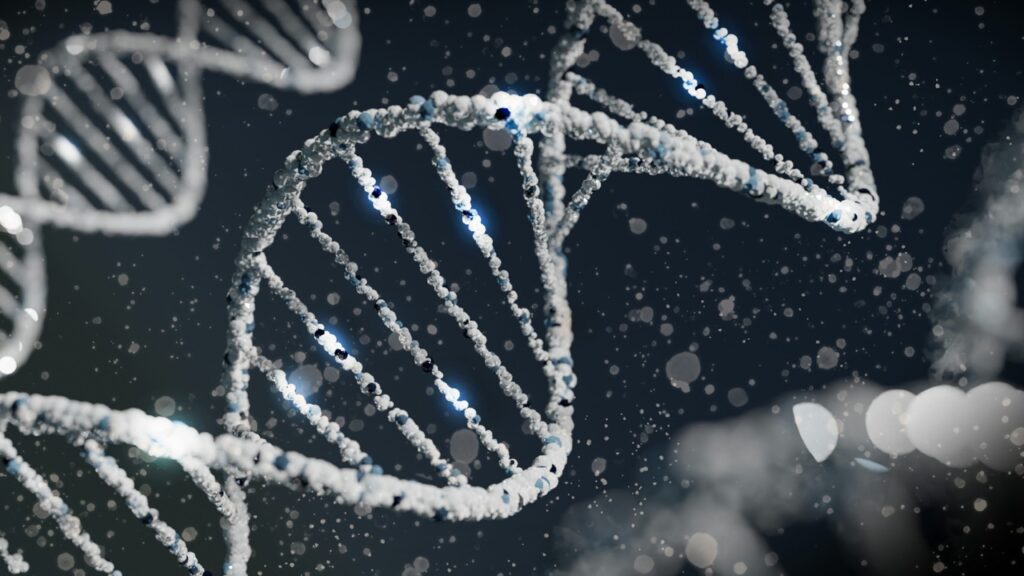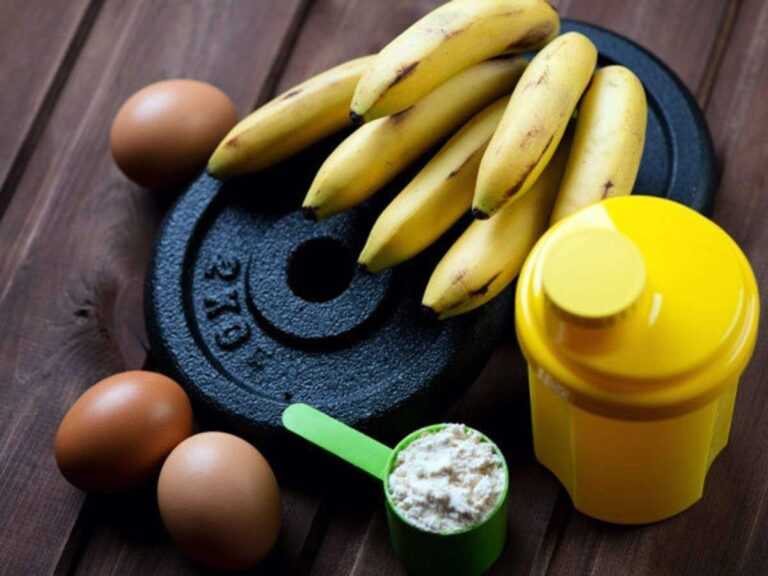Genetics is the field of science that explains genes and how traits are passed from parents to children through changes in the DNA sequence. The human genome is the full set of genetic instructions in a person’s DNA.All the cells in the body has its genome, which is the cell nucleus.

A DNA is a molecule carrying instructions to build other molecules that help our body function. A gene is a part of the DNA with instructions to build a particular protein. Proteins are molecules that perform various tasks in our body, such as starting chemical reactions, fighting diseases, controlling cell growth etc.
The physical traits an individual carries is effected by their genes. For example, hair colour, colour of eyes, skin colour, height, body type etc. Though we can’t change most of our physical traits, but some can be changed as they are also influenced by external environment, for e.g. weight, muscle mass, even to an extent height and skin colour.
There is simply no argument in the fact, that genes play a crucial role in the sporting success of an individual. Your genetic makeup can predispose you towards being naturally better at strength, speed or endurance sports.
The very first principle of exercise physiology, on which the entire gamut of physical activity is based on the ‘Principle of Individuality’.
This simply means that we all are different born with different set of genetic characteristics, and has its unique abilities and needs.
For building muscle and showing strength, many factors present at birth play a role. Limb length, tendon insertions, fibre composition, muscle belly length, initial hormone levels, and neurological factors are all inherited.
That is the reason that each individual will respond to the same training, differently. For example, a group of athletes looking to gain muscle & strength could all follow the same well-designed program, nutrition protocol, rest & recuperation routine, yet after completing it, the individual training response could differ greatly among the athletes. Some will have gained more muscle, some will gain a lot, some will gain a little, and some may be unable to complete the program.
In a study, when lifters trained their quads for 16 weeks, a quarter of them increased their quad size by 58%. Another quarter of the lifters made absolutely zero size gains, and the bulk of people increased quad mass by 32%. When study authors biopsied the exercisers’ quads, they found that the muscles’ relative number of specialized stem cells, called satellite cells, predicted how well their muscles would grow in response to training.
A study, assessed sex differences in size and strength changes after training, in 585 subjects (342 women, 243 men). The study showed that 12 weeks of progressive resistance exercise resulted in a wide range of responses, with some subjects showing little to no gain, and others showing profound changes.
Size changes ranged from -2 to +59%, 1RM strength gains ranged from 0 to +250%, and MVC changes ranged from -32 to +149%, despite of following the exact same training protocol.
– Another major indicator of how much muscle you can grow is the size of your muscle belly and your tendon. The muscle belly is the main muscle we are talking about, and the tendon is the one which attaches the muscle to the bones.
The size of your muscle belly and tendon is genetically defined. You’re born with it. Some people have longer muscle bellies and some have short. Similarly, some have longer tendons and some have shorter.

You cannot grow your muscles longer, because of your genes. You can only grow them wider. So, if you are born with longer muscle bellies and shorter tendons, you would gain much more muscle mass than the person with shorter muscle bellies and longer tendons.
However, that would matter only when you really put in the work to get bigger. A person with shorter muscle belly and longer tendon will overtake the best genes in the world, if the other person isn’t interested to grow them to larger proportions.
– Your muscle fibre makeup is also genetically determined and is a major contributor to how big you can get. As it is famously said, that a champion marathon runner doesn’t look the way he is, because of running marathons. He runs marathon because he is born that way. That’s true for all top long-distance runners in the world.
Have a look at the athletes from Kenya & Ethiopia. The reason they dominate the sport is because of their excellent genes, which are used to give an edge to the other athletes around the world. Not that with practice you cannot beat them, but the odds are heavily against you. The stats clearly show this. Take out the results of all the short sprints and long-distance runners in Olympics or World Championships, and see how many are blacks.
Similarly, people with more fast twitch musclefibres have more potential for size and strength. Those with more slow-twitch fibres have more potential for endurance. Now that’s something you cannot control. It’s what you’re born with.
To check your muscle fibre makeup, you would have to get a biopsy done for each muscle, which would be impractical from both financial and sports standpoint. If you are interested in being a sportsman, what sport you excel in will be seen from an early age. That’s where the role of the coach comes into play.
For e.g. a gene which heavily influence the muscle fibre makeup of an individual, is the ACTN3 gene. The ACTN3 gene helps create a protein that is found in fast-twitch muscle fibres. That’s why an individual with the dominance of this gene is more likely to excel in the strength and hypertrophy based sports.
Another gene is the MSTN gene, which makes the protein called ‘Myostatin’, also called the ‘Hercules gene’. It is a protein based hormone, that acts at physiological levels to limit muscle mass.Similarly, there are other genes like IGF1, MyoD, Pax3 etc.
That’s why some people have dominance of certain muscle building genes, which help them grow muscles with much less effort. Yet others may train hard, but recover quite quickly because of these genes.
Scientists have discovered many muscle building genes, but how they function is quite complicated and not fully understood. And many more such genes are likely to be discovered in the future.

– Hormones play a critical part in any aspect of sports. For e.g. the most anabolic hormone in the human body, which is majorly responsible for strength & hypertrophy gains is testosterone.
However, acc. to studies, circulating testosterone levels are a heritable trait. Using genetic association testing, researchers have identified 2,571 genetic variants that influenced the levels of testosterone or related sex hormones. Same goes with other anabolic hormones like GH, IGF1 etc.
That’s why, some individuals, have a higher level of circulating free testosterone level, and higher GH & IGF1 levels.
However, when we talk about the percentage of influence, studies have shown that, skeletal muscle is a highly heritable quantitative trait, with heritability estimates ranging 30–85% for muscle strength and 50–80% for lean mass. The rest depends on external factors, which include training, diet, hormonal profile, and extreme grit, tenacity and perseverance.
This simply means, whether or not you are genetically predisposed for any sport, you can excel in it to a very high level with the right use of above external factors.
In a study, scientists analysed results from 3,012 adults aged between 18-55 – who had not previously taken part in exercise training – to determine how our genes can affect three important types of physical exercise.
Muscle strength, cardiovascular fitness, and anaerobic power are all key factors in shaping an individual’s fitness, wellbeing, and quality of life, and all participants showed improvements following their exercise training, but to varying degrees, even when performing exactly the same exercise training.
By combining data from 24 separate studies, the researchers discovered that genetic differences are responsible for 72% of the variation in outcomes for people following identical exercises designed to improve muscle strength. In total, the study identified 13 genes, as being responsible for how well the body reacts to cardiovascular fitness, muscular strength, and anaerobic power exercises.
Another study, which analysed why some weightlifters’ muscles grow much more quickly than others’ has identified a set of 141 genes that appear to regulate growth of the body’s skeletal muscles.
I often hear youngsters using genetics as a classic excuse for failure to build muscle, gain strength & lose fat. No doubts genetics, play an important role in all your physical goals, as we saw above, but you simply have no control over your genes.
The only factors you can control are your training, diet, sleep, and massive amount of hard work & consistency which goes along to sculpt your desired physique. World is full of examples of legendary athletes in every sport, who have overcome every possible genetic limitation, as they never cared about whether they had one.
No doubts, some individuals are fast responders and some are slow, as we saw in the above research studies. But, let me ask you a question. What if you are a slow responder ? What alternative do you have, other than optimizing all aspects of your training, diet and recovery methods ? The second alternative is only one – ‘Give up’, and that’s your choice.



